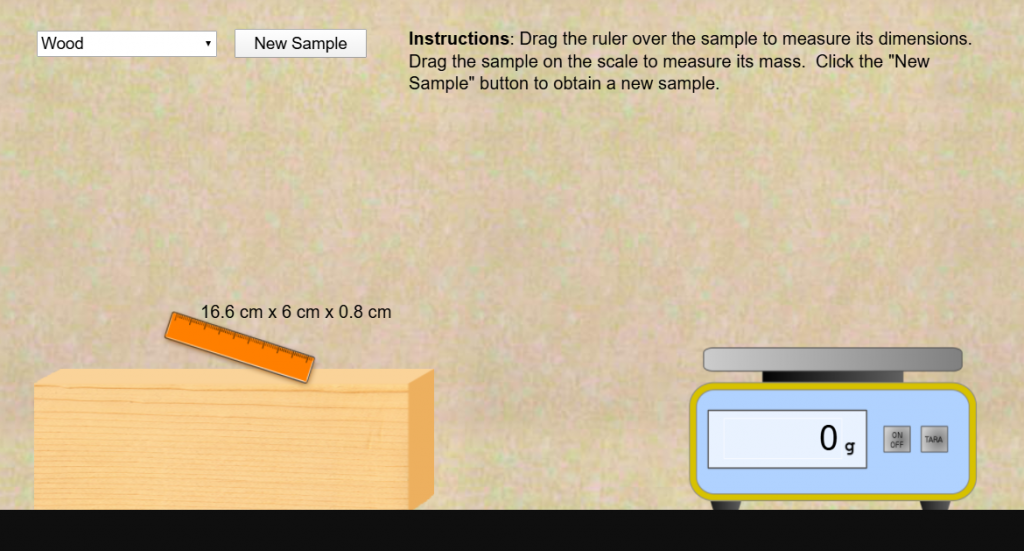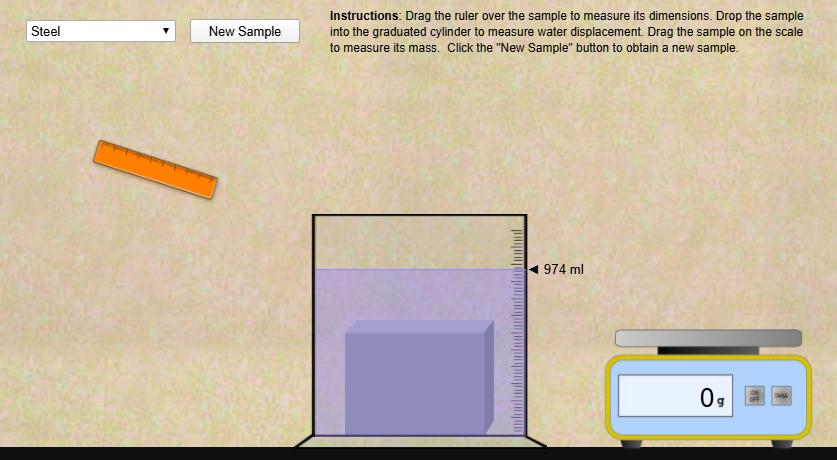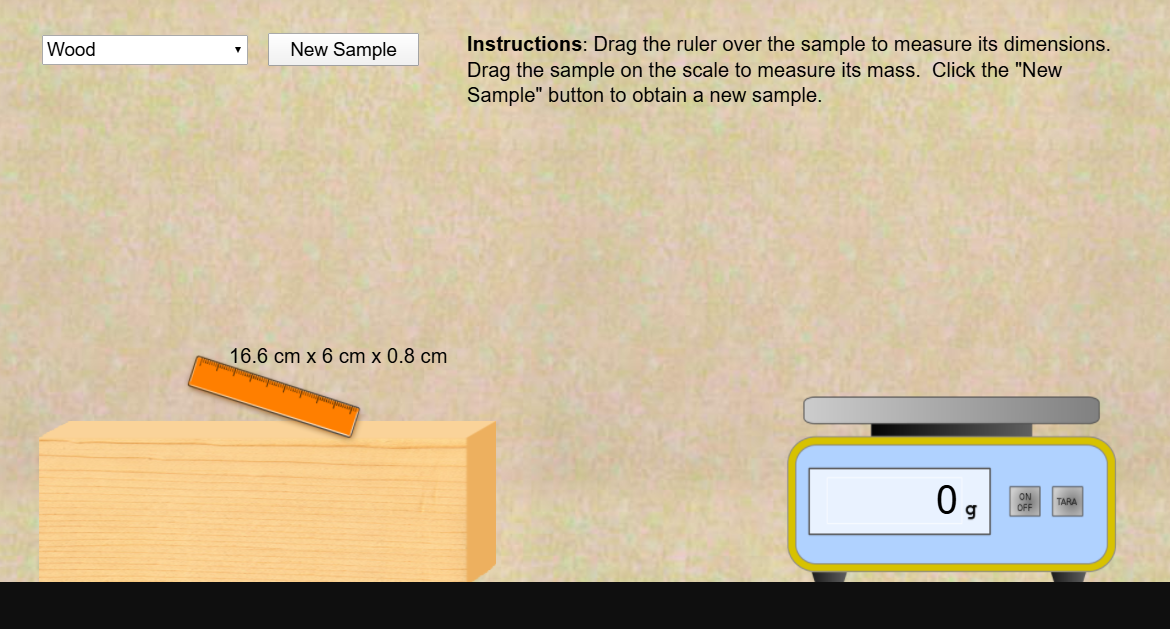Unit 1 of the Modeling Instruction chemistry curriculum has students develop the ideas of mass and volume and then the relationship between them (density). Consistent with the Modeling Instruction method, students collect data and analyze that data to develop a model to describe a relationship.
This year, my school is beginning virtually. It will be a challenge to transform our chemistry lab activities to the online format until we are able to resume in-person classes (and even then, we will be limited in the types of activities that we can do while “socially distant”). As I thought about facilitating my class online, I discovered Construct.net, which is typically used to produce online games. I found that it can be adapted to simulate labs like this one. I created a couple different versions. Check them out!


It simply allows students to measure the mass and volume of several samples of a material (currently, it has steel, aluminum, and wood). The first sample is always the same size for everybody, but subsequent samples are random sizes/masses (so encourage students to include a wide range of sample sizes in their data). Students can then use whatever graphing tools desired to analyze the data. A few years ago, I made a simple data analysis tool that would work well for this.
I like that the water displacement version shows which substances sink and float. Also, you can produce some samples that, because of their size or density (wood) do not completely submerge. This provides a chance to discuss what the water displacement measurement represents.
The water displacement version can also be used to show the relationship between cm3 and ml. Just measure a sample with the ruler and then dunk it in the water.
Leave a comment about any issues you find or requests for features. Here are some things I’m thinking about:
- More realistic interactions: an on-screen ruler to measure length, width, and height would build measurement skills. But, Contruct.net is really a 2-dimensional tool, so measuring that third dimension would be a challenge.
- I had a request for cylindrical samples to better match the materials many of us use for the actual lab activity. It’s an idea for the future, especially if this is used to supplement the in-person activity for those who are absent.
- UPDATE July 27, 2020:
- Added zinc, copper, and lead to the substances.
- Changed the button text to say “New Size”
- Clarified the instructions.
The source files are available for anyone wanting to modify or extend. This was my first time using Construct.net, so keep that in mind before you berate me for my shoddy work 🙂. I do encourage anyone else working on this or similar lab simulations to share what you come up with.
Construct.net Source File – Version 1 (LxWxH Volume measurement)
Construct.net Source File – Version 2 (Water Displacement Volume measurement)

A very useful resource, thanks for sharing it!
This is great! Thank you!!